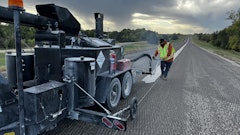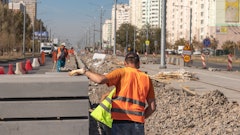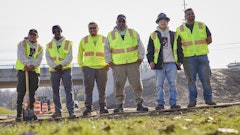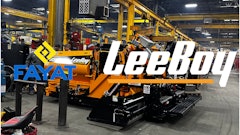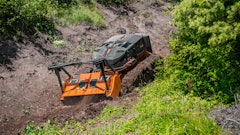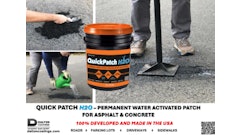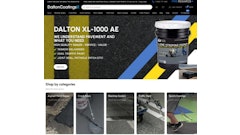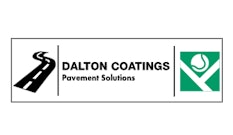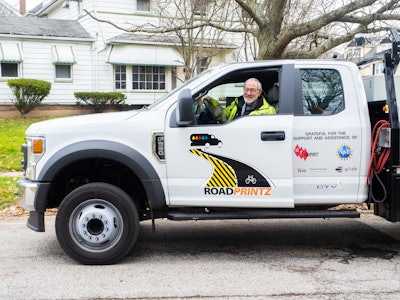
Almost everything in our daily lives has an element of technology attached to it. From our smart devices to advanced computers and wireless networks, technology is all around us. Technology has helped contractors complete jobs more efficiently, with less downtime while collecting useful data to help owners understand business elements that weren't necessarily measurable in the past.
“I’ve been in the industry for about eight years, but there have definitely been a lot of advancements," said Brian Kausler, President of Skip-Line. "Sometimes it feels like change is slow, but in hindsight it’s often quicker than you realized in the moment. When I started at Skip-Line, the industry was probably 15 years behind parallel industries like agriculture. There have been advancements in both fields, but the gap is much narrower than it was, we’re probably only eight years behind big ag now."
Road markings were invented to communicate a variety of traffic directives — passing zones, stops, crosswalks, parking designations and more. That concept has not changed however, the way these markings are being put down and the analytics behind the process, that is where the major change to the industry has begun to evolve.
Business Intelligence Driven by Data
Business intelligence is a combination of approaches for assembling, analyzing and storing data. It makes the process of generating, measuring and analyzing any amount of data, easy fast and accurate. Once it's collected and organized, businesses can leverage this information for crucial insights on processes, material usage, operational risks and evaluate cost saving methods. Additionally, business intelligence is relevant to any business regardless of its size.
"As a company we feel that it is our duty to collect data and help decision-makers make the best decisions possible with their limited resources," said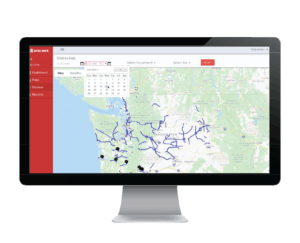 The platform provides real-time information and data to help contractors mange pavement markings.Skip-Line
The platform provides real-time information and data to help contractors mange pavement markings.Skip-Line
Manufacturers in the pavement maintenance industry have embraced data collection technology, allowing companies to proactively manage their business in ways that benefit the business owner and their assets.
"We believe Spec-Rite Online platform is truly revolutionizing the line striping industry," said Kausler. "The online dashboard empowers stripers with the right information at the right time to track material usage and retrieve information at any point in time. Also, automated reporting preserves the integrity of data prone to mistakes when handwriting on paper."
Data analysis can assist organizations to make informed decision on the running of the business and provide information that can help avoid any loss of revenue, creating smarter operational decision making.
"You can’t expect operators to keep a truck operational, worry about alignment, line widths, temperatures, pressures, patterns, and application rates for paint and beads without assistance tools," said Kausler. "That level of skill, attention to detail, and experience is rare in today’s labor market."
An Autonomous Future
Currently, lane departure systems and adaptive cruise control are nearly standard in new vehicles, machine learning and automation are starting to become commodity technologies, and data is in nearly every industry to optimize business – especially in the current environment where there’s no room for waste due to labor shortages and material or product scarcities.
There is a greater need for markings to guide autonomous vehicles, yet funding to implement higher quality marking systems is limited. The driverless technology for vehicles isn't too far fetched and manufactures understand that concept and are trying to adapt.
"We are constantly innovating and are engineering our products to complement the needs of the market," said Kausler. "For example, we’ve created, and will continually develop, the Spec-Rite Online platform to understand road markings like never before. With these tools, Skip-Line will connect road markings to a safer, smarter future."
Robotics of Road Markings
Robots are widely used in such industries as the automobile manufacturing sector to perform simple repetitive tasks, and in industries where work must be performed in environments hazardous to humans. Robotic technology has made its way into the marking industry, a pilot program in Cleveland,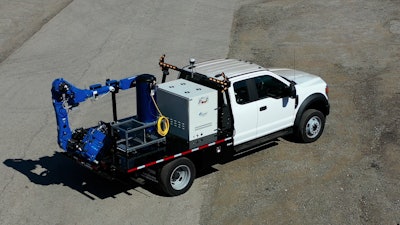 Stella, the robot painting truck, demonstrates a safer and more efficient way to paint street symbols.RoadPrintz
Stella, the robot painting truck, demonstrates a safer and more efficient way to paint street symbols.RoadPrintz
"We have been in research and development for the last couple years," said Sam Bell President, RoadPrintz Inc, "Currently, we are getting ready to build our first production units for beta testing. We’ll be riding along with our beta test customers to gather their feedback, make necessary improvements and adjustments, and finalize our production design. We anticipate booking orders by next spring."
Bell, who was a top-rated auto mechanic running his own shop for 40 years partnered with Wyatt Newman, PhD, PE professor of electrical engineering and computer science at Case Western Reserve University decided to pursue this venture from events they encountered.
"As we began to work on this in earnest, tragedy struck, a local worker stenciling in a nearby intersection was killed by a driver," said Bell. "A few weeks later, another worker from the same company was killed on the job and yet another of their workers suffered crippling injuries, all right here in the greater Cleveland area. We began to see what the industry was up against, so we redoubled our efforts."
Keeping workers safe is at the forefront of any companies mission, bringing the crews home safe every night. Street symbols are typically painted by hand-stencil, exposing the crew to risk of injury. This robot paint truck keeps the stencil operator inside the cab while the painting is controlled by a few clicks on a tablet screen with the RoadPrintz technology.
"RoadPrintz is not a long-line striping solution, we’re aimed squarely at the transverse markings segment of the industry — turn arrows, ONLYs, railroad crossings, the symbols and markings usually hand stenciled by a team of workers standing on the pavement," said Bell. We’re here to supplement your long-line equipment, not replace it."
Technology plays an important role in our day to day operations and can provide consistency, efficiency and safety elements shaping the way we live. Innovation and adoption starts with the leadership at the top of the company and trickles down. It is important to keep an open mind because companies can harness the benefits and boost productivity.
"It’s an exciting time for the striping industry," concluded Kausler.




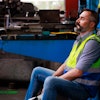

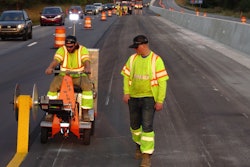


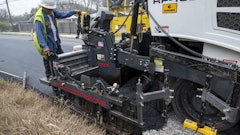
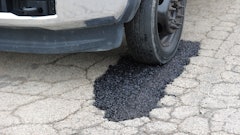
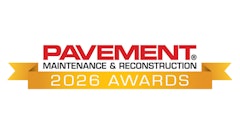
![Lee Boy Facility 2025 17 Use[16]](https://img.forconstructionpros.com/mindful/acbm/workspaces/default/uploads/2025/09/leeboy-facility-2025-17-use16.AbONDzEzbV.jpg?ar=16%3A9&auto=format%2Ccompress&fit=crop&h=135&q=70&w=240)

